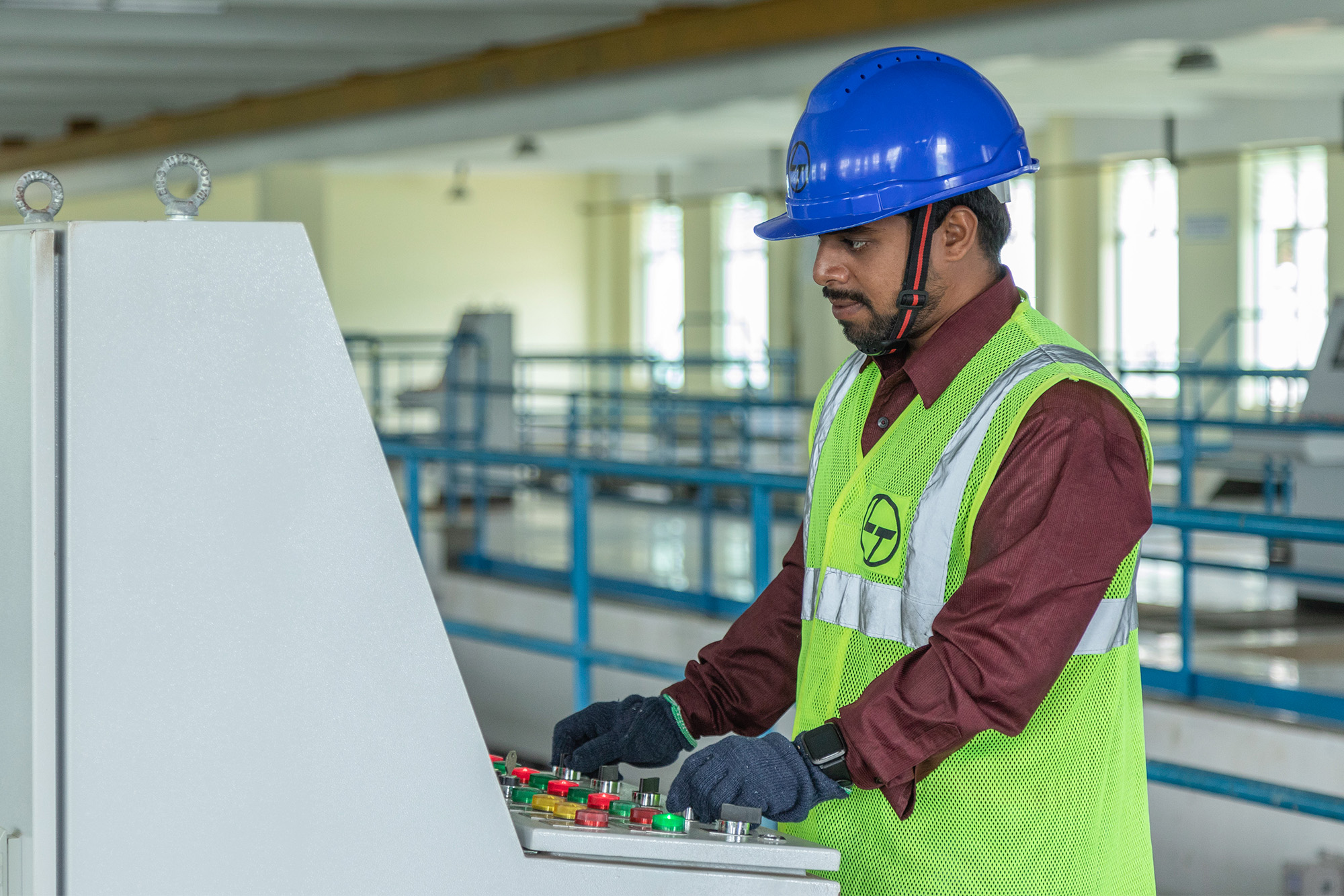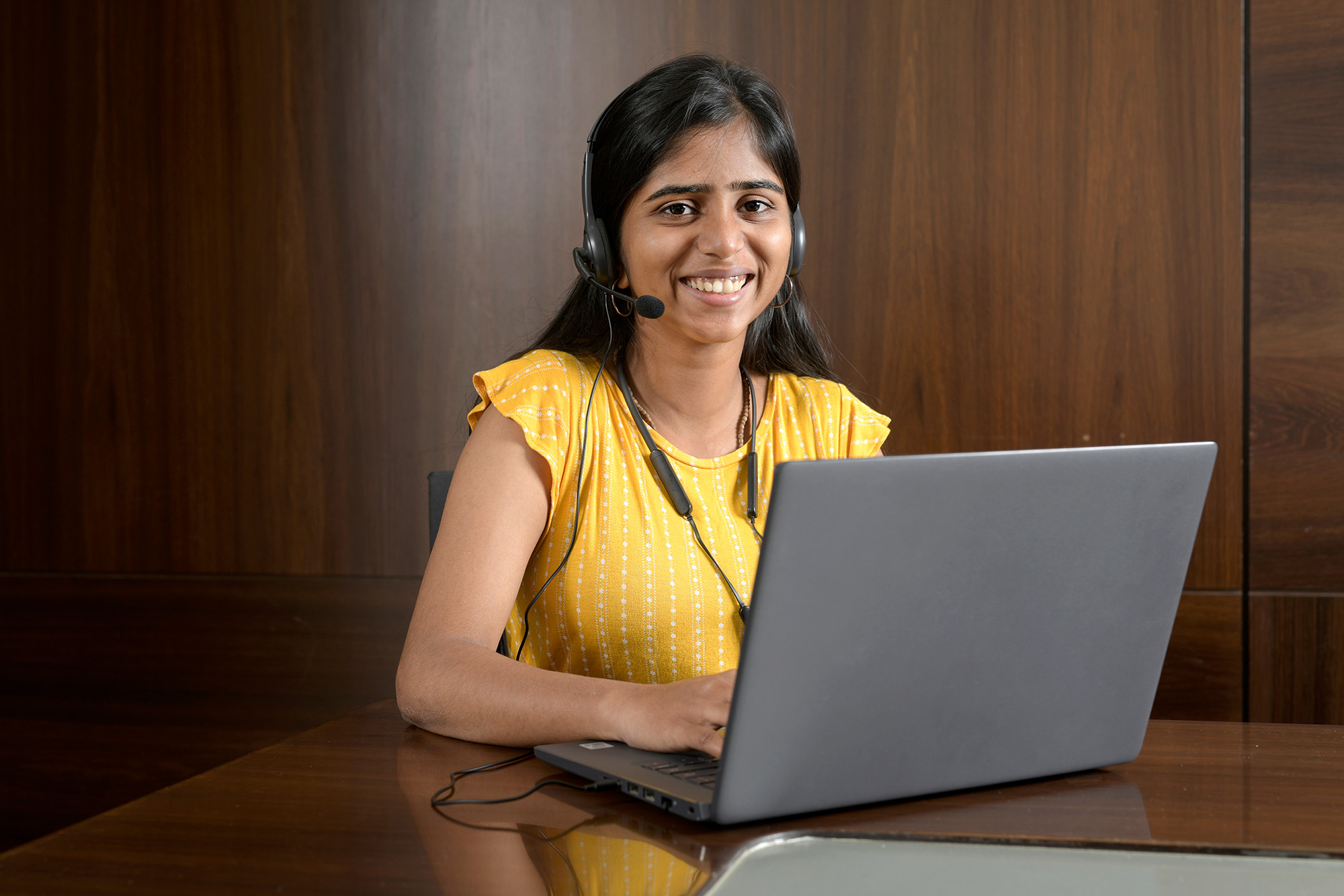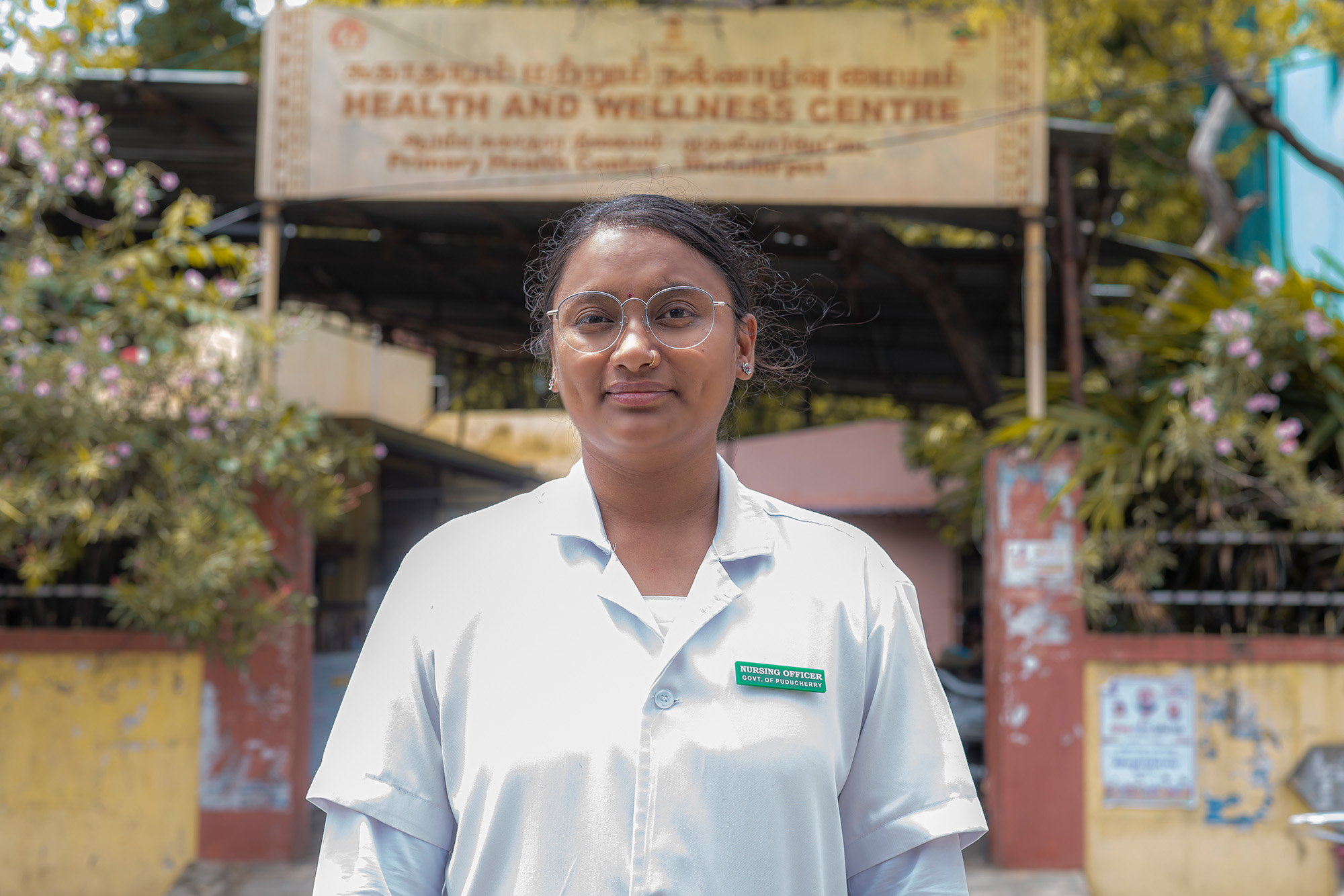Sourav Gorai is an electrician. Pushpa B. completed her nursing degree during the pandemic. Malini Sapaliga is a Bachelor of Commerce graduate who is blind. What they all have in common is the awareness that it isn’t enough to know one’s craft in the modern workplace.
As the 2022 Microsoft New Future of Work Report makes clear, new technologies are changing the nature of jobs and redefining the scope of productivity – in every sector.
Many Indian workers are eager to contribute to the country’s economy but are still unemployed or underemployed. One of the biggest hurdles they face is a lack of digital skills, especially in a post-pandemic world.
Leading companies in sectors like financial services, construction and healthcare are now stepping in to bridge this gap between demand and talent. They are doing so by connecting vocationally trained workers and people with disabilities to employers in need of their skills.
“Increasing digital adoption across all sectors requires education and skills that are essential for the progress of individuals and organizations. Employers and employees need to identify and develop these skills and connect them with more dynamic career growth paths,” says Rohini Srivathsa, national technology officer, Microsoft India. “The good news is that people across industries want to learn new digital skills – and we are strengthening our commitment to a more inclusive skills-based economy. Collaborating closely with our customers and partners, we are empowering people with accessible digital learning paths for the jobs of tomorrow.”
The efforts have brought about robust collaborations between industry leaders and nonprofit organizations, and thoughtful investment in digital skilling. Here are some stories about what they mean to an individual’s dreams, to the workforce’s stability, and ultimately, to societal welfare.
Changing perceptions about a brick-and-mortar industry, one worker at a time
Today, the construction sector is the second-largest employer in the country, after agriculture. It employs 35 million people. Yet it’s also a sector often dismissed as being old-fashioned. When you say the word “digitization,” it is unlikely that “construction” is the first word that comes to mind. But one of the world’s top contractors, Larsen & Toubro (L&T) Construction, part of L&T, the $17 billion conglomerate headquartered in India’s financial capital of Mumbai, is at the digital forefront.
“L&T Construction has been quick to recognize the urgent requirement of digital skills — tools to improve or increase productivity even at the grassroot levels in the construction field,” says J. Raguram, head of L&T’s Construction Skills Training Institute (CSTI). “The world has been largely disrupted by digitization and we didn’t want to be left behind in our endeavors to build a digitally literate workforce.”
CSTI is an L&T initiative to train India’s workers in specialized vocational skills like formwork carpentry, bar bending, masonry, and water and effluent treatment plant operations. The students who come to any of the seven CSTIs in India — in Chennai, Mumbai, Ahmedabad, Bengaluru, Hyderabad, Kolkata and Delhi — are between 18 and 35 years old; most haven’t graduated from high school.
It seemed natural to extend the training provided at the CSTIs to include digital skills powered by Microsoft’s Office 365 suite of productivity software. The joint program that came about received its name from the initials of the two companies: MSLT.
For the Anudip Foundation for Social Work, the non-government organization that manages the MSLT, the program resonates deeply with its vision of transforming lives through digital empowerment, says Alaknanda Ghosh, general manager of the Anudip Foundation for Social Work.
“In the past year-and-a-half, it has been a rewarding journey with Microsoft and L&T to look at addressing the unique needs of construction workers — a community which has its own deep challenges. The program has been curated exclusively for this beneficiary group,” Ghosh says.
Sourav Gorai arrived at L&T’s Bengaluru CSTI to complete a specialized training program in the operations and maintenance of effluent treatment systems. Completion would make him eligible for the role of a water and effluent treatment operator or a maintenance technician at various water related projects. The 45-day program at CSTI in Bengaluru included the Microsoft module.
In August 2021, the 25-year-old Gorai opened a Microsoft Word file for the first time and saved it. “I found it easy to learn the way they taught at CSTI,” he said.

Post training, Gorai was placed to work at one of the water supply projects overseen by L&T in the southern state of Karnataka.
Now, Gorai uses Word to capture pump readings, Excel to analyze them against past records, and PowerPoint to present photographs of faulty equipment to his managers. Gorai says that the MSLT program opened his eyes to skills he might need for future work.
“I want to keep doing this operations and maintenance work,” he says, “but I would like to learn everything digital that will help me with this goal and my life, including programming.” Now, he has set his sights on becoming a site engineer.
About 70% of CSTI’s graduates are absorbed by L&T itself, with a minimum salary of INR 13,000 per month (about USD 165). Students are encouraged to aim high, particularly in the sessions where they are taught to create resumes and prepare job applications. More than 4,000 students have benefitted from the MSLT program during its first year of operation.
While most students are provided initial placements internally, candidates are free to take jobs outside if they wish to.
“The main aim of the establishment of CSTIs is to create a world-class skilled workforce in construction,” says Kumar Subramanian, principal at L&T CSTI in Bengaluru, where Gorai graduated. “It should benefit the construction industry as a whole.”
Making the professional playing field more level for persons with disabilities

A person likely wouldn’t notice that Malini Sapaliga is blind unless she revealed it. “My eyes don’t seem like they have any problem,” she says. “I usually maintain proper eye contact when talking to people.”
Diagnosed with retinitis pigmentosa, a rare genetic disease that presents as night blindness in childhood, most people with the condition lose their eyesight by adulthood. Sapaliga was the only blind student in her class in school and college. This meant that she often had to sit out activities and opportunities that were not designed for individuals with disabilities.
About 2.2% of India’s 1.3 billion people have a disability. To put this in context, that figure is about 28 million — more than the population of Australia.
“In school, they never entertained our requests to work on computers. They didn’t know how to teach blind students,” she says.
That didn’t stop her from considering a career in banking and finance. Toward the end of her undergraduate degree in commerce at a prestigious college in Mumbai, a mentor connected her to the American India Foundation (AIF).
AIF directed her to an online course called “Business Correspondent.” It is one of five courses launched under Project SAMEIP as a collaboration between the State Bank of India Foundation and Microsoft India. Aimed at creating career pathways for underserved young persons with disabilities, the project began as a skilling initiative to contribute to the banking, financial services and insurance (BFSI) sector in India.
“SBI Foundation is committed to the vision of enabling inclusion and accessibility for all,” says Sanjay Prakash, managing director of SBI Foundation. “We envision to create a more inclusive ecosystem through this mission by engaging the BFSI sector by onboarding 100 corporates through a unique Pledge to Disability Inclusion Campaign.”
Out of the nearly 500 candidates who completed training at the end of Phase I, 338 were placed across 128 partner employers.
“The course structure included everything that could help me prepare — banking, financial sector and IT skills,” Sapaliga says. The latter was crucial for her career prospects. “There wasn’t any other course for students who are blind or have low vision, where they teach how to create a PowerPoint presentation.”
The SAMEIP team was a massive support to Sapaliga through the placement process, helping connect her to a mutual fund distribution company based in Mumbai. “I tried to explain to them that I can do everything if they can provide me with a PC with the software installed in it,” she says.
Sapaliga asked for 10 days to prove herself. She eventually secured a training contract as a customer service associate in July 2021, three months after she had finished the course.
Phase II aims to reach 650 participants. The SAMEIP team also continues to think about the first cohort. Following up is a key part of the program; the team wants to ensure that the 350 people they placed as part of Phase I continue to thrive in the workforce.
One of them will be Sapaliga, who continues to work at the mutual fund distribution company. She’s enrolled in a distance-learning MBA program and hopes to join her company’s human resources team. They, in turn, are aware of her ambitions and have begun looping her in on hiring processes.
Empowering the nurses who helped India through a pandemic secure their own future

In the early days of the pandemic, as the lives of ordinary citizens came to a screeching halt, one group of people discovered their services were needed more than ever: essential medical workers. Around the world, citizens wrote them notes, sent donations for masks and other protective gear, and applauded them to show their gratitude.
But, as the pandemic entered its third year, a team at Apollo Hospitals felt that they needed to go beyond symbolic appreciation to convey gratitude to these tireless workers.
“As India was in the depth of the COVID crisis, healthcare professionals from across the country had to be pressed into service to manage this crisis. A new disease with an unknown treatment protocol meant that all of us were working under very tough circumstances,” says Dr. Sangita Reddy, joint managing director, Apollo Hospitals Group. “As nurses are the primary care givers in any healthcare setting, here, too, the nurses carried a significant burden of managing COVID. As the country recovered from multiple waves, Apollo Hospitals and the Impact Guru team conceived the ‘Thank A Nurse’ initiative as a give back to the nursing community.”
It was a timely and thoughtful idea. Working nurses are required to have an undergraduate degree in nursing, but they carry out an increasingly wide range of tasks in a hospital environment. The work is tiered, and personnel have their tasks cut out. Additionally, the pandemic forced hospitals and nurses to rethink the division of work as staff numbers were reduced. There was also an immediate need to expand their digital footprint and provide as many telemedicine services as possible.
The skill gap ranged across simple and complex tasks. Nurses needed to be trained to create new templates for data entry, for instance. At the same time, there could also be emergency situations where they would be required to operate lifesaving equipment, such as ventilators.
In February 2022, Apollo Hospitals, Impact Guru Foundation, and Microsoft launched “Thank-A-Nurse” as a self-paced, 24-hour online course. The program has an ambitious goal: upskilling 20,000 nurses over three years.
“The Thank-A-Nurse program is a social impact project to acknowledge the contribution of nurses, redefine and reinvent their career trajectories, empower them to succeed and grow in their profession, their lives, and the future of the sector. It paves pathways for them to grow in their careers and enroll in specializations, as per their interests,” says Sundeep Talwar, CEO of Impact Guru Foundation.
Half of the course comprises a digital health segment by Medvarsity, an ed-tech platform created by Apollo Hospitals. This covers clinical workflow and cybersecurity in healthcare. The other half of the course is centered around basic tech skills, drawn from Microsoft Office.
Pushpa B., a nurse at a government hospital in Puducherry, is one of the participants who has benefitted from the course. She graduated as a nurse in 2020, in the middle of the pandemic, and found herself having to acknowledge that workplaces and industries that adapted quickly to digitization would be the ones to thrive in the “new normal.”
“We had a computer as a course in the first year of our Bachelor of Science program, but it didn’t cover much,” she says. Their involvement didn’t extend beyond trooping down to the computer lab, and then turning the machines on and off.
“But through this Thank-A-Nurse course, I learned all about Microsoft Word, what digital health means to the healthcare field and how to implement it,” she says.
Pushpa has a critical job at her workplace: she is responsible for communicating daily details about COVID-positive patients and vaccinations to the Directorate of Public Health. She uses Microsoft Word and Microsoft Excel. She also teaches part-time at a paramedical institute. After learning Microsoft PowerPoint during the course, she started using the software in her classes.
“I want to learn many more skills,” she says. “If any other initiatives like this come up, I’d gladly be part of it.”
The Thank-A-Nurse program accommodates all kinds of goals. It is adaptive, useful to nurses like Pushpa, who are from smaller towns in India with little prior knowledge of digital health, as well as to nurses looking for a skill upgrade.
The program continues to transform the outlook of thousands of nurses. Enrollments have already exceeded 6,000 over the program’s lifetime, and nurses come from every state and union territory of India.
One of the organizers’ future goals is to integrate the course with the offerings of the Indian Nursing Council, the national regulatory body for nursing education.
Ultimately, the Thank-A-Nurse campaign is committed to empowering every nurse in India with the dream of better living and working conditions, and the skills to demand it.
Top image: Sourav Gorai who graduated from L&T’s Bengaluru CSTI, now works at a water supply project in Karnataka in southern India. Photo by Mukul for Microsoft.
Amal Shiyas is an assistant editor at FiftyTwo, a digital publication.

